Finally, sailing into Australia through
Hydrographer's Pass felt like quite and accomplishment. Whales
breached around us over and over, which made for fun watches. We
sailing into Mackay after dark and docked at the secured fuel dock,
which was to serve as the customs dock for the World ARC boats. A
representative from customs came down to welcome us, and gave us
strict warnings not to leave the boat until the morning when
officials would arrive. At first light, 8 customs officers showed up
at Nexus, equipt with drug sniffing dogs (wearing Teva puppy
sandles), high tech drug tracing technology, and a mountain of
paperwork. They thoroughly searched our boat and passed us over to
the quarantine inspection team. Thee men went through our galley and
souvenirs to check for any meat, dairy, shells, and wooden items.
The ARC took us on a day trip which was
a nice time as we got to see platypuses in the native habitat. A
dinner hosted by the ARC was a great time to eat and drink with
friends while celebrating our completing the entire Pacific crossing.
We made several trips to the mall to replace clothing, camera,
watches, and other belongings that didn't survive the Pacific as well
as we did. Having a few new clean articles of clothing feels
amazing. The mall was busy and overwhelming after being on the
little Pacific Islands for the last 8 months. Brian got a chance to
race with some of the locals at the Mackay Yacht Club.
After a massive re-provisioning, we
were off for the Whitsunday Islands. Our first stop in the
Whitsundays was Hamilton Island. The island is a cute little upscale
resort town with golf carts and expensive ice cream. Our next stop
was Whitsunday Island and the famous Whithaven Beach. White sand
beaches endlessly stretch for miles. Turtles curiously patrol the
shallows and check on boats moored in the bay. We took a walk to see
an areal view of Whithaven Beach which was beautiful. The sand and
the bright blue water swirls along the coast and river delta. We
returned back to Hamilton Island and stayed several more days waiting
out the weather eating fish & chips with the cockatoos and
walking around the island looking for kangaroos and vacation homes.
We attended church at a small non-denominational chapel at almost the
highest point on the island.
On Hook Island, we the attempted to
escape harsh winds and swells. The weather was cool, and the water
freezing, but Brian gathered the courage to snorkel several times in
10-15 min increments. He could hear whales under the water which was
pretty cool and also a little scary. A quick snorkeling stop on
Hayman Island was our next stop. We only lasted 15min but covered
some ground.
Port Douglas was our next major port of
call. We quickly found good wifi at Target and a health food store
with great chai lattes. One morning we watched the biggest cat we
have ever seen walking around the docks and speculated about how long
it would be until the big kittie got eaten by a local salt water
crocodile. Port Douglas is an artsy little town with market days and
lots of pricey restaurants for the tourists that stay in the resorts
and come to Port Douglas to hook up with tour groups. A nine mile
beach stretches across the adjacent side of the town from the marina.
On a sunny day, we walked about half of it. We took a full day tour
on a snorkel/dive boat that took us out to Agincourt Reef, one of the
Great Barrier Reef's outer reefs. The reef is really in the middle
of nowhere, which is slightly scary when jumping in. In one word,
the day was cool. Cool water, cool air, cool fish, cool coral.
Lauren shivered through her mouth piece of her snorkel.
Inching our way North, we stopped at
Lizard Island. The island is home of a derelict cyclone battered
resort and the Lizard Island Research Center, but most renowned as
the place Captain Cook climbed to the top of to observe his
surroundings when disoriented and sailing around Australia's outer
reef. We made he steep climb to Cook's Lookout twice during our stay
at Lizard Island. When we reached the top on our first climb, the
clouds were setting in and the sun was beginning to set, but our
second accent gave us fantastic views of the surrounding reef. We
were pretty sore and officially took our 80th Advil of the
trip. We spent several days of great snorkeling, which was a little
less great when someone at the research center advised us that there
were crocodiles that could be aggressive at dusk. Giant “man
eating” clams scatter the reef. Some are so large and old that
they are growing coral.
Heading out of Lizard Island, we
grabbed on to a mooring buoy in Cormorant Passage, a pass in the
outer reef. With no one around for miles, we hopped in the water and
drifted through the edge of the pass on slack/incoming tide. It was
a really nice day, especially because we had tacos, cake, and
celebrated Brian's 28th birthday.
We sailed and sailed and decided to
take a break in the aboriginal village of Siesia/Bamaga. We didn't
spend a whole lot of time here, just a night to rest and regroup.
The area is infested with saltwater crocodiles and a species of shark
called bronze whalers that are hungry for fish, outboard motors, and
humans, according to a local fisherwoman. The little area near the
anchorage slightly resembled an out west truck stop... dusty red
streets, gas station, slushee store, and an empty restaurant. A
local informed us that aboriginals in Seisia have dogs with them at
the beach because the crocs are more likely to attack the dogs.
Because we were running ahead of
schedule to Darwin, we spent one night anchored at the mouth of the
Adelaide River. This stop was pretty uneventful because croc
infested waters meant no dinghy trips or swimming. We later found
out that the Adelaide River is the top destination for croc tours. A
man was eaten three weeks ago while fishing in this river.
In Darwin, we anchored in Fannie Bay,
just adjacent to the Darwin Yacht Club and Trailer Sailing Club. The
clubs were very active and have a variety of small boats sailing
around the anchorage every evening. We went on the ARC tour to
Litchfield National Park where we learned about the Australian “Top
End”. Termite hills (made of termite poo, pee, and saliva) scatter
the landscape. Among 27 species of termite are the Cathedral
Termites who build gigantic hills, and Magnetic Termites that build
gravelike mounds oriented East-West for temperature regulation. A
queen termite gives birth an average of once every 30 seconds...
according to our tour bus driver. Also on our stop was a lovely
little swimming hole, but we were not allowed to swim since there was
a crocodile attack two days before. Needless to say, peering over
the edge was enough for us. Fortunately, there was a great double
waterfall that we visited where we could swim. Most of the time
there are no crocs there. The water was cool, but we relished the
chance to swim in fresh water. We swam under the falls and sat on
the rocks, letting the water pound our backs. With the unusually dry
90 degree heat, we warmed up in no time. We spent one night at the
Mindil Beach Market, shopping at the local stands, listening to live
music and watching the sunset.
We apologize for the late Australia
email, as our brand new computer crashed (for the second time in 8
months.) Brian has been tirelessly trying to repair it with limited
resources and has succeeded once again. We have safely arrived in
Bali and will be catching up with the emails as soon as we get tired
of relaxing in bungalows, drinking beer, and playing in the pool. All
is well!
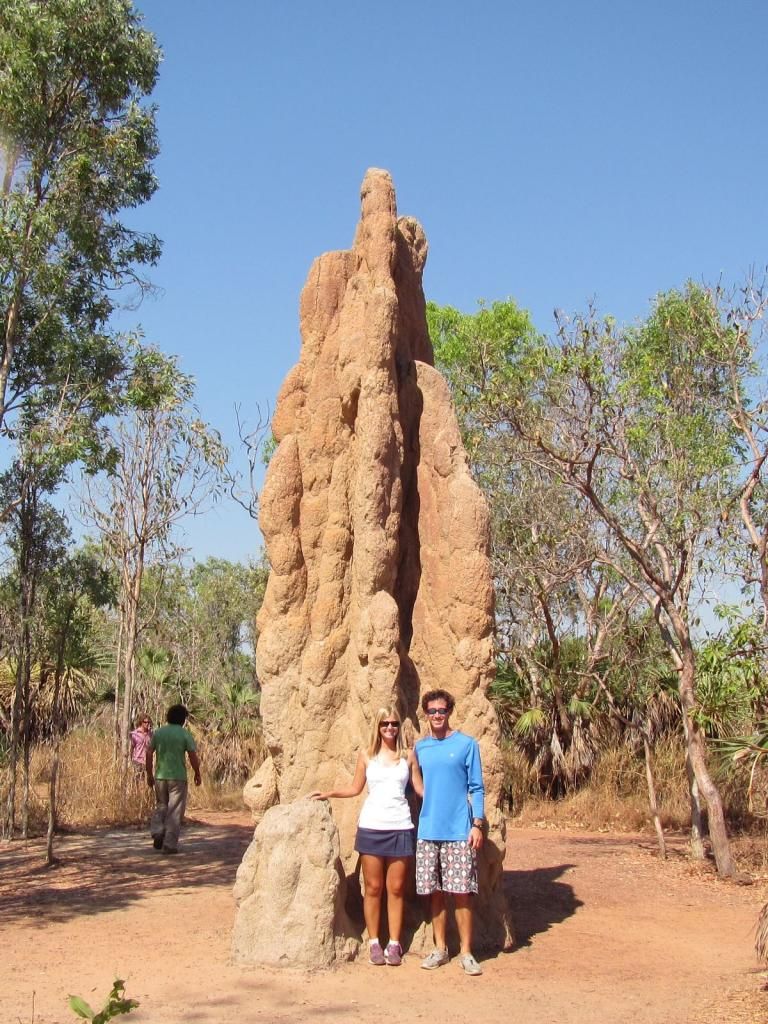 |
 |
 |
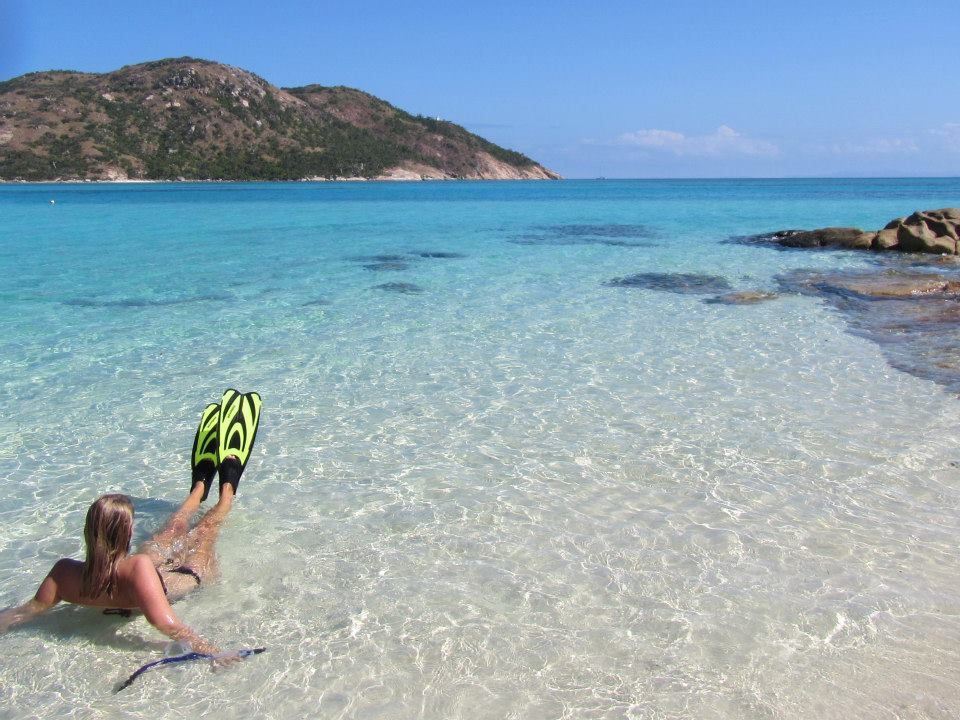 |
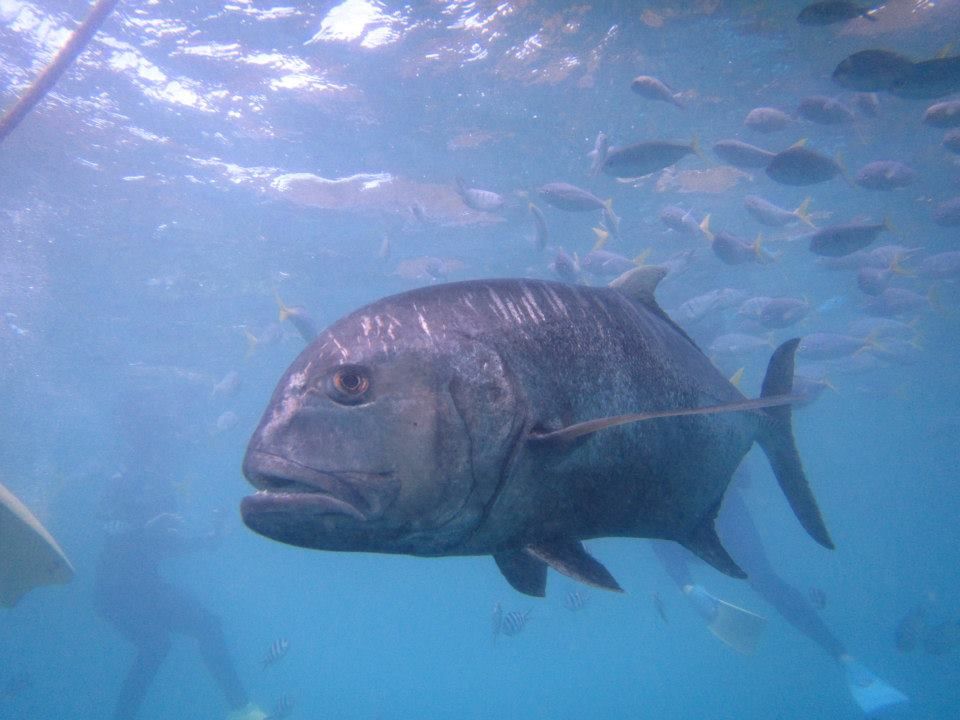 |
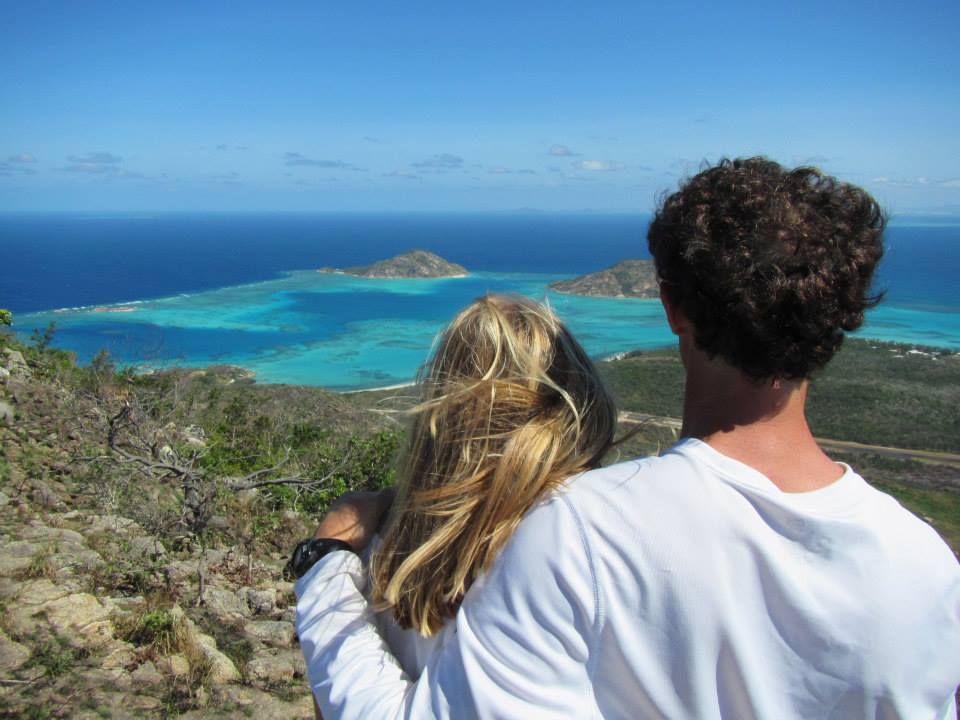 |
 |
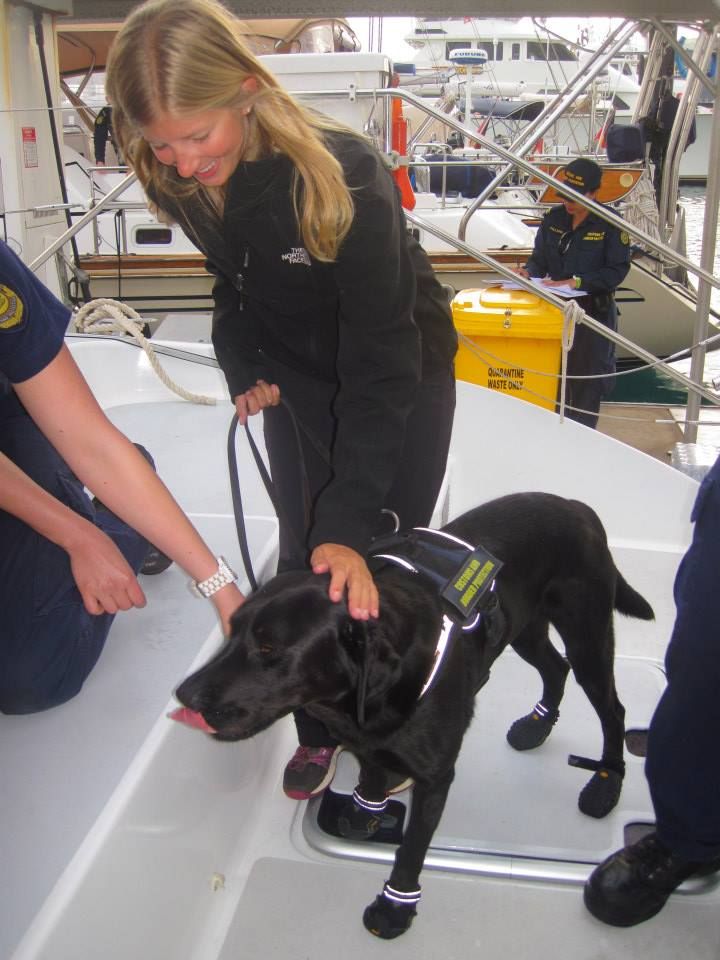 |


No comments:
Post a Comment